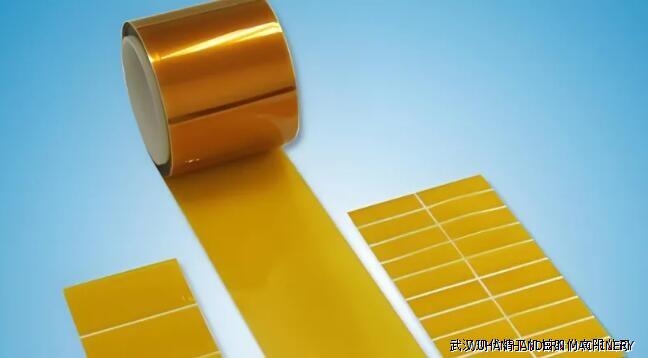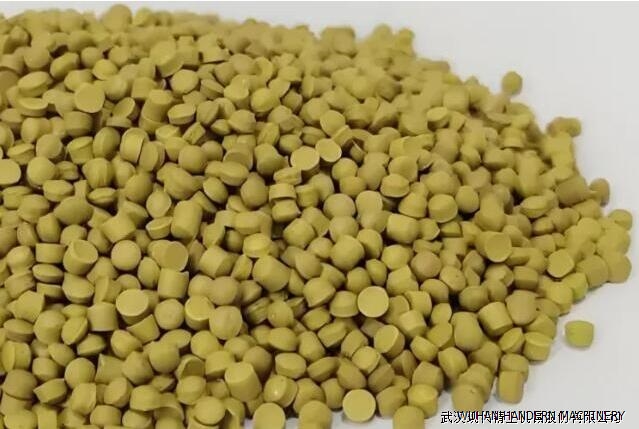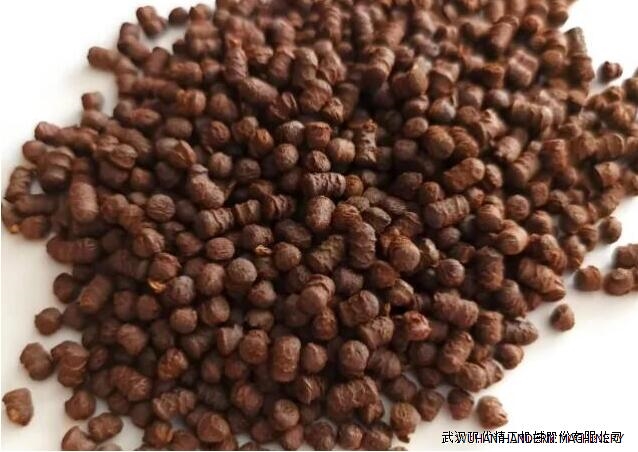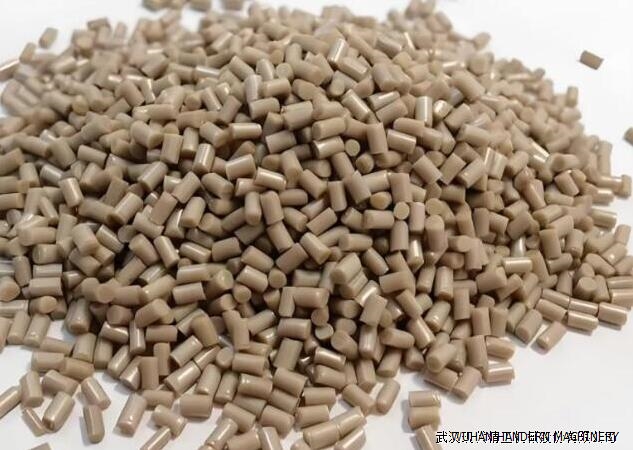Interpretation of the properties of PAI, PI, PBI, TPI, PEEK special engineering plastic films
DATE:2024/8/7 14:48:47 / READ: / SOURCE:This station
Engineering plastic film is divided into five categories: general plastic film, general engineering plastic film, high-temperature engineering plastic film, and ultra-high performance engineering plastic film. Today, the editor will introduce to you the ultra-high performance engineering plastic film.
Ultra high performance engineering plastic film, also known as special engineering plastic film, is commonly used in special engineering applications, including PAI film, PI film, PBI film, TPI film, and PEEK film. What are their respective characteristics and application fields,
PI (Polyimide) film
 It is a polymer with an imide structure (- CO-NR-CO -) in the main chain of its molecular structure. It has excellent thermosetting properties and is one of the best organic polymer materials in terms of comprehensive performance. Some PI models of films have a high temperature resistance of over 400 ° C and the highest flame retardant rating, earning them the title of "one of the most promising engineering plastics of the 21st century". It is believed that "without polyimide, today's microelectronics technology would not exist".
It is a polymer with an imide structure (- CO-NR-CO -) in the main chain of its molecular structure. It has excellent thermosetting properties and is one of the best organic polymer materials in terms of comprehensive performance. Some PI models of films have a high temperature resistance of over 400 ° C and the highest flame retardant rating, earning them the title of "one of the most promising engineering plastics of the 21st century". It is believed that "without polyimide, today's microelectronics technology would not exist".
PI film has excellent electrical insulation performance, mechanical performance, chemical stability, aging resistance, radiation resistance, low dielectric loss and other properties, and these properties will not undergo significant changes in a wide temperature range (-200 ℃ -300 ℃). Therefore, PI film is often used in some fields with high performance requirements, such as flexible screens, rail transportation, aerospace, electronic packaging, wind turbine blades, military industry, automobiles and other fields.
PAI (polyamide imide) film
 It is a new type of engineering plastic film containing amide groups. The strength of PAI is unparalleled by any industrial unreinforced plastic in the world today, and is known to be the highest. Its tensile strength exceeds 172MPa. Even in high temperature environments, it has good mechanical properties and dimensional stability, as well as superior wear resistance, friction resistance, UV resistance, and high-energy radiation resistance. In addition, PAI film also has low flammability, high strength, high insulation, radiation resistance, corrosion resistance, self-lubricating, and low thermal expansion coefficient.
It is a new type of engineering plastic film containing amide groups. The strength of PAI is unparalleled by any industrial unreinforced plastic in the world today, and is known to be the highest. Its tensile strength exceeds 172MPa. Even in high temperature environments, it has good mechanical properties and dimensional stability, as well as superior wear resistance, friction resistance, UV resistance, and high-energy radiation resistance. In addition, PAI film also has low flammability, high strength, high insulation, radiation resistance, corrosion resistance, self-lubricating, and low thermal expansion coefficient.
At present, PAI film is commonly used in the production of precision parts for high-tech equipment, as well as in applications that require extremely high precision, such as non lubricated bearings, seals, bearing isolation rings, reciprocating compressor parts, electronics and semiconductor industries, and can also be applied to petroleum drilling equipment.
PBI (polybenzimidazole) film
 Thermosetting special engineering plastic film is considered to be the best heat-resistant plastic film currently available, with an instantaneous temperature shock of up to 400+and a density of 1.2g/cm ³ for poly (alkylbenzimidazole); The most prominent advantage of PBI film is its instantaneous high temperature resistance. Alkyl PBI only decomposes completely at 465-475 ℃, while aromatic PBI does not decompose at 538 ℃. The weight loss at 900 ℃ is only 30%, and the normal operating temperature is 300-370 ℃.
Thermosetting special engineering plastic film is considered to be the best heat-resistant plastic film currently available, with an instantaneous temperature shock of up to 400+and a density of 1.2g/cm ³ for poly (alkylbenzimidazole); The most prominent advantage of PBI film is its instantaneous high temperature resistance. Alkyl PBI only decomposes completely at 465-475 ℃, while aromatic PBI does not decompose at 538 ℃. The weight loss at 900 ℃ is only 30%, and the normal operating temperature is 300-370 ℃.
PBI films have excellent mechanical strength, rigidity, hardness, and creep resistance, as well as outstanding dimensional stability, wear resistance, and friction performance, extremely low coefficient of linear thermal expansion, outstanding resistance to high-energy radiation, excellent corrosion resistance, inherent low flammability, high purity in ion polluted environments, and low exhaust properties.
PBI thin films are mainly used in fields such as aerospace, automotive transportation, electronics and electrical, precision machinery, etc., which require high temperature resistance, chemical resistance, high-precision accessories, and other materials.
TPI (thermoplastic polyimide) film
 Developed on the basis of thermosetting PI, it has properties similar to PI (thermosetting) and is easy to process. It has high elastic modulus, strong impact resistance, good heat resistance, good dimensional stability, good flame retardancy, excellent electrical insulation, chemical corrosion resistance, radiation resistance, and other characteristics. However, in terms of thermoplasticity, the temperature resistance of TPI film is lower than that of PI film.
Developed on the basis of thermosetting PI, it has properties similar to PI (thermosetting) and is easy to process. It has high elastic modulus, strong impact resistance, good heat resistance, good dimensional stability, good flame retardancy, excellent electrical insulation, chemical corrosion resistance, radiation resistance, and other characteristics. However, in terms of thermoplasticity, the temperature resistance of TPI film is lower than that of PI film.
Compared to PI, TPI has excellent processing performance. In addition to using traditional thermosetting PI processing methods, it can also be processed using extrusion, injection molding, and other processing methods. In addition to making thin films, it can also be used to manufacture complex shaped components, which can be molded in one go or recycled for secondary molding. The product has high precision, but its strength and high temperature resistance have decreased. It can be widely applied in fields such as aerospace, automotive transportation, electronics and electrical, precision machinery, etc.
PEEK (polyetheretherketone) film
 Special engineering plastic films with excellent performance have good physical and chemical properties, excellent chemical resistance, thermal stability, and oxidation resistance, as well as good mechanical strength, creep resistance, and electrical properties. It can withstand high-energy radiation and has good flame retardant properties. The long-term working temperature range can be from -100 ℃ to+250 ℃, with a maximum thermal deformation temperature of 320+for PEEK fiber.
Special engineering plastic films with excellent performance have good physical and chemical properties, excellent chemical resistance, thermal stability, and oxidation resistance, as well as good mechanical strength, creep resistance, and electrical properties. It can withstand high-energy radiation and has good flame retardant properties. The long-term working temperature range can be from -100 ℃ to+250 ℃, with a maximum thermal deformation temperature of 320+for PEEK fiber.
Due to its excellent chemical resistance, extremely low moisture absorption, resistance to wear and corrosion, and continuous exposure to hot water or steam without being affected, PEEK film has been widely used in aerospace, automotive manufacturing, electronics and electrical, medical, and chemical industries.
Who is the best among these five types of special engineering plastic films? Here we make a simple performance comparison:
Heat resistance: PBI>PI>TPI ≈ PAI ≈ PEEK (with significant differences among different specifications)
Chemical stability: PI ≈ PBI>TPI>PAI>PEEK
Electrical insulation: PI>PBI>TPI>PAI ≈ PEEK
Processability: PEEK>TPI>PAI>PBI>PI (PI and PBI are thermosetting materials)
Mechanical properties: PAI, PBI, PI, and TPI each have advantages in different aspects, while PEEK has a good balance.
After reading the introduction and performance comparison of these five special engineering plastics, who do you think is the best? I believe there won't be an exact answer to this question, only what suits you best is the best.
Ultra high performance engineering plastic film, also known as special engineering plastic film, is commonly used in special engineering applications, including PAI film, PI film, PBI film, TPI film, and PEEK film. What are their respective characteristics and application fields,
PI (Polyimide) film

PI film has excellent electrical insulation performance, mechanical performance, chemical stability, aging resistance, radiation resistance, low dielectric loss and other properties, and these properties will not undergo significant changes in a wide temperature range (-200 ℃ -300 ℃). Therefore, PI film is often used in some fields with high performance requirements, such as flexible screens, rail transportation, aerospace, electronic packaging, wind turbine blades, military industry, automobiles and other fields.
PAI (polyamide imide) film

At present, PAI film is commonly used in the production of precision parts for high-tech equipment, as well as in applications that require extremely high precision, such as non lubricated bearings, seals, bearing isolation rings, reciprocating compressor parts, electronics and semiconductor industries, and can also be applied to petroleum drilling equipment.
PBI (polybenzimidazole) film

PBI films have excellent mechanical strength, rigidity, hardness, and creep resistance, as well as outstanding dimensional stability, wear resistance, and friction performance, extremely low coefficient of linear thermal expansion, outstanding resistance to high-energy radiation, excellent corrosion resistance, inherent low flammability, high purity in ion polluted environments, and low exhaust properties.
PBI thin films are mainly used in fields such as aerospace, automotive transportation, electronics and electrical, precision machinery, etc., which require high temperature resistance, chemical resistance, high-precision accessories, and other materials.
TPI (thermoplastic polyimide) film

Compared to PI, TPI has excellent processing performance. In addition to using traditional thermosetting PI processing methods, it can also be processed using extrusion, injection molding, and other processing methods. In addition to making thin films, it can also be used to manufacture complex shaped components, which can be molded in one go or recycled for secondary molding. The product has high precision, but its strength and high temperature resistance have decreased. It can be widely applied in fields such as aerospace, automotive transportation, electronics and electrical, precision machinery, etc.
PEEK (polyetheretherketone) film

Due to its excellent chemical resistance, extremely low moisture absorption, resistance to wear and corrosion, and continuous exposure to hot water or steam without being affected, PEEK film has been widely used in aerospace, automotive manufacturing, electronics and electrical, medical, and chemical industries.
Who is the best among these five types of special engineering plastic films? Here we make a simple performance comparison:
Heat resistance: PBI>PI>TPI ≈ PAI ≈ PEEK (with significant differences among different specifications)
Chemical stability: PI ≈ PBI>TPI>PAI>PEEK
Electrical insulation: PI>PBI>TPI>PAI ≈ PEEK
Processability: PEEK>TPI>PAI>PBI>PI (PI and PBI are thermosetting materials)
Mechanical properties: PAI, PBI, PI, and TPI each have advantages in different aspects, while PEEK has a good balance.
After reading the introduction and performance comparison of these five special engineering plastics, who do you think is the best? I believe there won't be an exact answer to this question, only what suits you best is the best.
Author:admin




